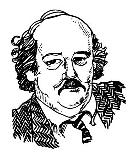Syndicated to Kansas newspapers July 17, 2017.
 We’re getting ready for the first test of a political-season, non-partisan primary election that comes up in August, followed by November’s general, and we’ll see just how non-partisan things stay.
We’re getting ready for the first test of a political-season, non-partisan primary election that comes up in August, followed by November’s general, and we’ll see just how non-partisan things stay.
The movement of city, school district and some other elections from spring to the traditional fall season—when for decades Kansans have been looking for that little elephant or donkey on yard signs and on handbills—may be the first chance we have to see whether those nonpolitical local offices are going to become just as political as the races for the Legislature, statewide offices and national offices in even-numbered years.
Both Republicans and Democrats have been doing some campaign seminars for candidates for those nonpartisan seats, maybe just showing candidates how to best organize a campaign, get voters to turn out—and maybe offering up some party activists to assist in those races.
Nothing dramatic yet, but there’s a little background work going on, in which parties can get a look at potential candidates for partisan offices, get a little more background on local issues, or maybe just interest more Kansans in politics and government and public policy.
Oh, and this year’s “off-year” election for nonpartisan offices might well give political parties a chance to become more involved in races without donkeys and elephants and red and blue signs to expand their influence, membership and contributions and such.
Now, this year, everything is going to be subtle. There will be candidates for the school district or city council who may, on inquiry, tell you what political party they identify with, after or before they also explain that non-partisan means non-partisan.
But, this is just the first time out with these fall elections, and so expect that those candidates will be a little quiet about what political party they belong to; actually, most issues at the school district and municipal election level aren’t hard political ones—or haven’t been turned into partisan issues…yet. For many voters, they’ll probably be interested in whether the school board candidate has kids in school. For local government seats? It might be whether you want whoever is in charge of storm water drainage to live higher up the hill than you do, with probably less interest on how well the water moves at the bottom of the hill, where your basement is…
Is this spooky? Probably not now.
Remember, the ballots don’t show a party affiliation…at least they don’t this year. But a couple election cycles from now, there might be some interesting nicknames that candidates want on the ballot. Joe “Dem” Smith, or Jack “Rep” Jones?
Now, there are some advantages to the odd-numbered year fall elections. It means that newly elected city council and school board members will not have to jump into the deep end of the pool in putting together a budget for the upcoming fiscal year. It gives those newly elected members some time to figure out just what they need to do, how things work, who’s doing what, and how they’d like to see their unit of government managed.
And…it might give some of those candidates a chance to start a political career that just might wind up in a larger office representing more constituents and larger issues that affect more people.
Or, this could just turn out to be a better way to make sure that county election offices have more time to make sure that they’re ready for the odd-year elections, and it might just provide work every year so that if there are economies in conducting an election, they can be realized.
We probably ought to be watching for the subtle party-affiliation hints, how candidates and parties participate in the campaigns, and just what is the future of “nonpartisan.”
